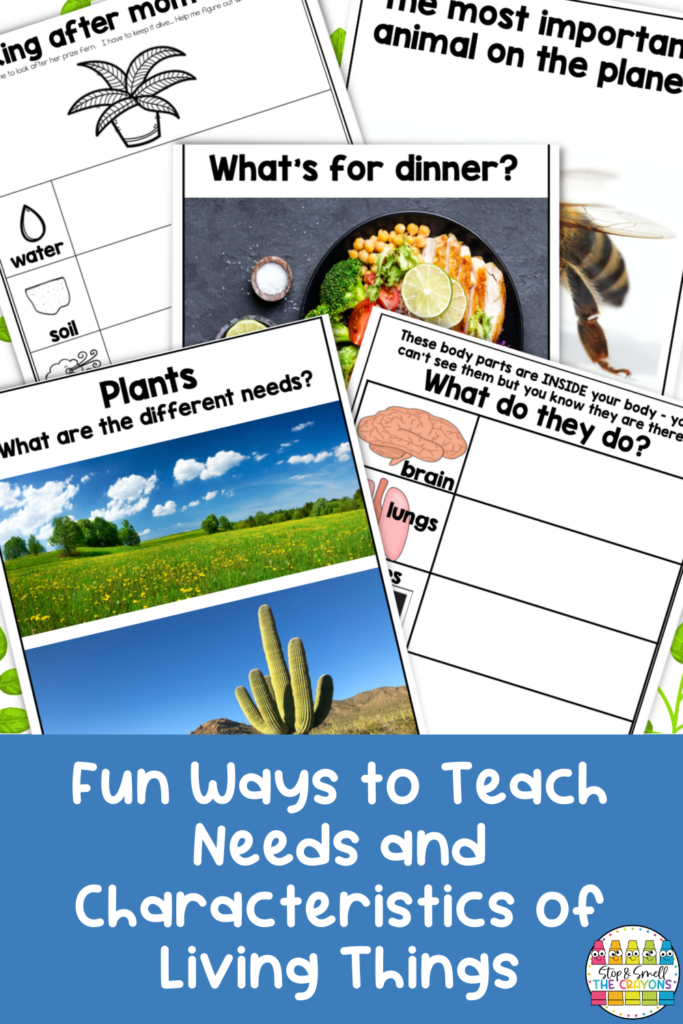As a teacher, it can really be stressful trying to incorporate science standards like Needs and Characteristics of Living Things into your already busy schedule. Maybe you’re even feeling a little overwhelmed because not only are you short on time, but you don’t have a lot of science materials or resources to work with! Don’t worry, I’ve got you covered! Here are my favorite activities that you can use to teach this unit while integrating it into other subjects. Keep reading to find out more!
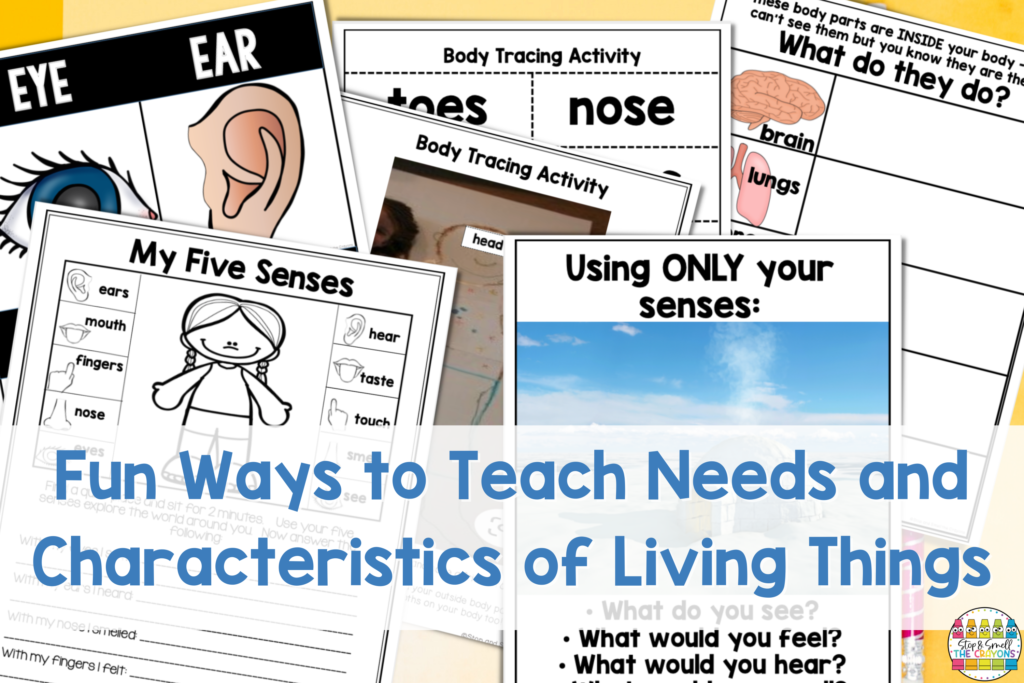
Use Movement to Learn Body Parts!
When teaching students about the needs and characteristics of living things, you have to include the basics. Teach them the different parts of the body! I love adding movement in my classroom because it’s fun, my students get a brain boost from physical activity, and they learn at the same time!
It’s important for kids to move their bodies while they’re learning about body parts! Movement helps them remember the names of body parts and what they do. When kids move while touching and thinking about what each part of their body can do, it helps them understand how everything works together. Plus, it’s a fun way to learn, and when kids have fun, they want to keep learning more!
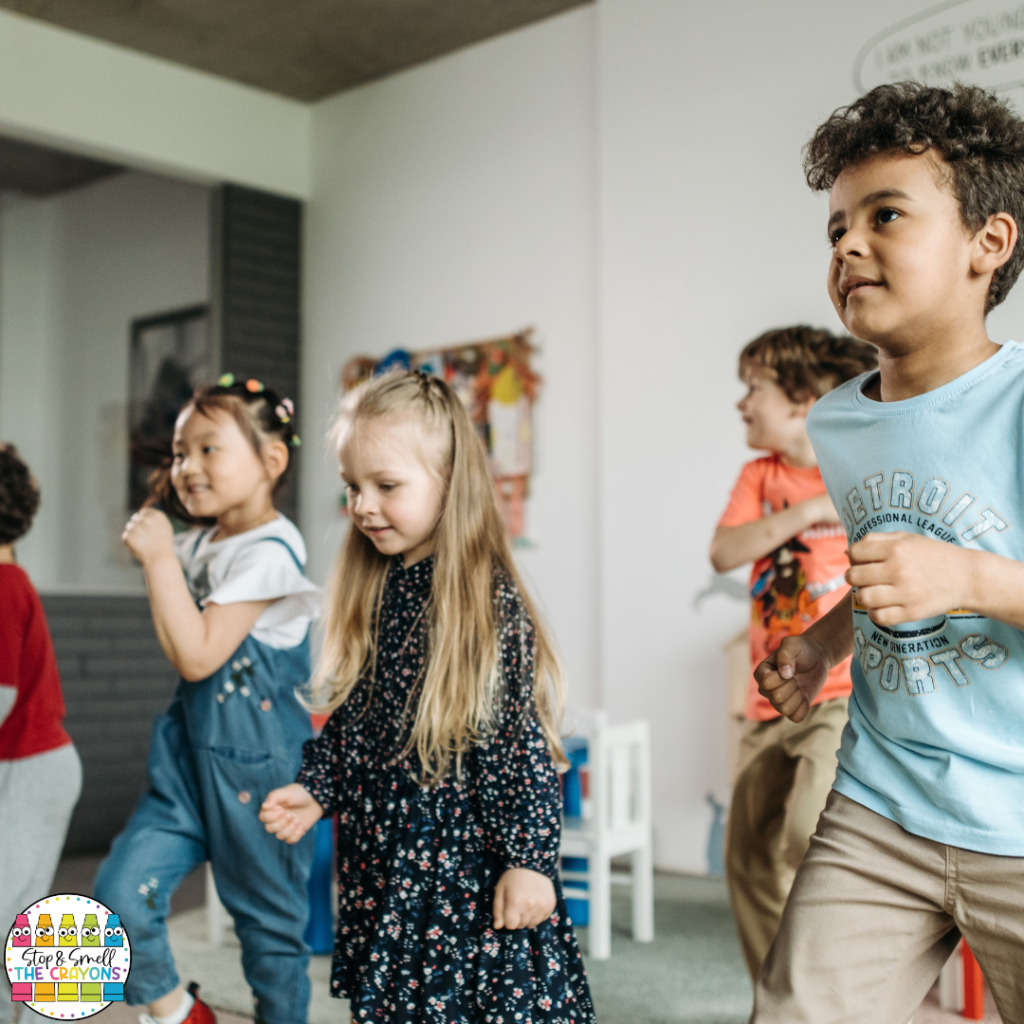
Try these games in Physical Education class or in your classroom:
- Simon Says – Vary the traditional way of playing this game by having Simon say things like “Simon says touch your body where your brain is” or “Simon says point to your heart”.
- Hokey Pokey – Make the game your own by varying the body parts you “put in”.
- Tony Chestnut – Students LOVE this silly song that names the parts of the body in a funny way! Once students have sung this song a few times, challenge them to go faster and faster and keep up pointing to body parts as the song picks up speed!
Movement and games are a fun way to teach the characteristics of living things! and are easily integrated at any time of the day! If you are looking for more activities to teach this standard, check out my Needs and Characteristics of Living Things Unit! Illustrated vocabulary cards, a body drawing activity, and cut-and-paste printables are just the extra practice your students need to truly “get” this topic!
Teach the Importance of Healthy Foods
An important part of teaching needs and characteristics of living things is students understanding that eating nutritious food is necessary for staying healthy. They also need to understand that we must have a healthy environment for all living things.
We want to teach our students that eating healthy foods helps our bodies grow strong and stay healthy. They need to understand that when they eat healthy foods like fruits, vegetables, and whole grains, their bodies get the vitamins and nutrients they need to work the right way. They also need to see that healthy food helps them have plenty of energy to play on the playground and learn in the classroom! helps us fight off germs and stay healthy.
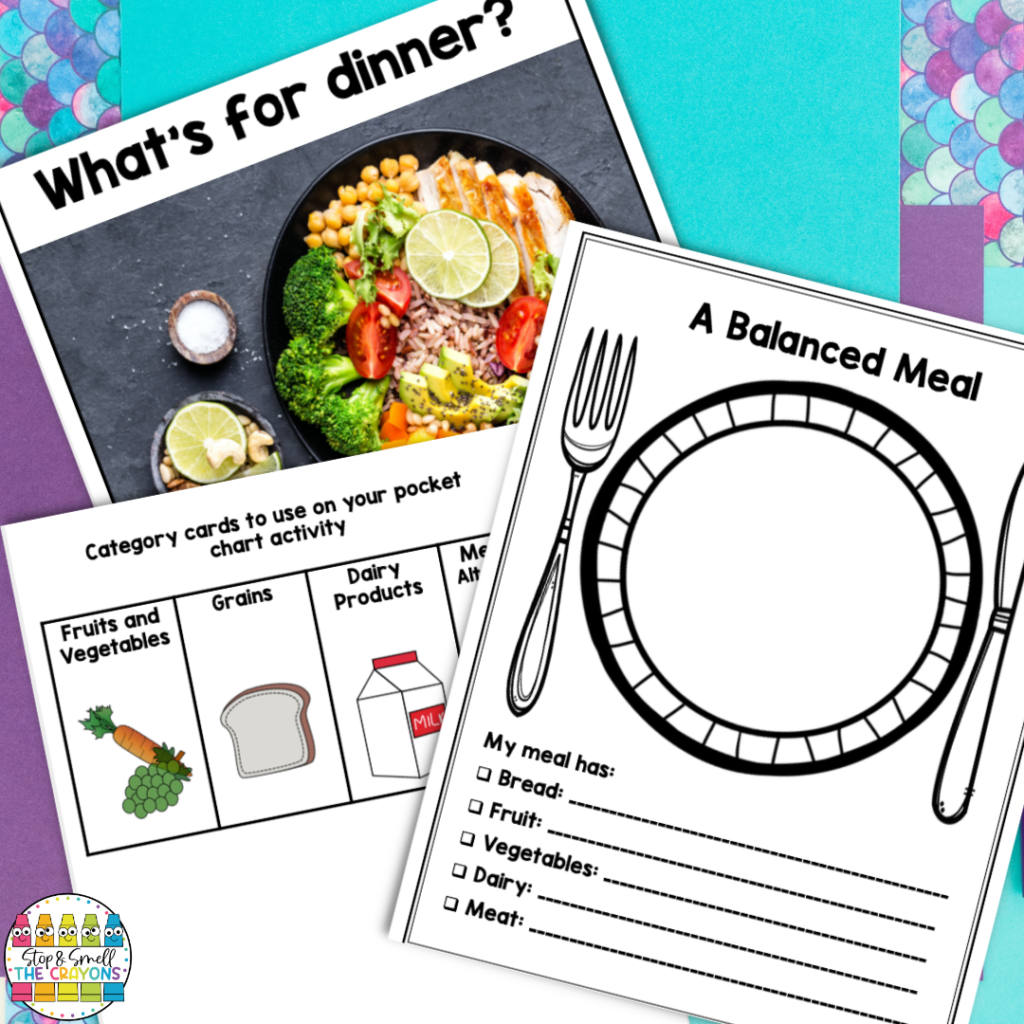
Healthy Foods Activity
- Go to the Canadian Food Guide website with your students and show pictures of what healthy foods the guidelines suggest. There is a wealth of information that will lead to an excellent discussion – even with 1st graders!
- Afterward, give each student a few grocery store flyers to cut out food items that are nutritious.
- Students will take their cutouts and glue them on paper to make posters that identify healthy food choices.
- Finally, students can present their posters to the class and explain how healthy food supports a healthy environment for a human.
This activity is an excellent way for students to understand the effects of both healthy and unhealthy foods. Learning this information at a young age will hopefully help them make better food choices in real life so they can keep themselves healthier as they grow.
If you really want to make sure students understand this concept, some extra practice is what you’ll find in my Needs and Characteristics of Living Things Unit! Brightly illustrated posters, a sorting activity, and “draw your own healthy meal” are just the ticket to creating a lesson your students won’t forget!
Double Up on Science with Math
You may have been waiting for this section of the post… how to incorporate math into your needs and characteristics of living things lesson plans! Any time you can tie math in with what students are interested in, you’ve got yourself on the right track to student engagement! Here are several creative ways to continue your discussion on living things in your math class!
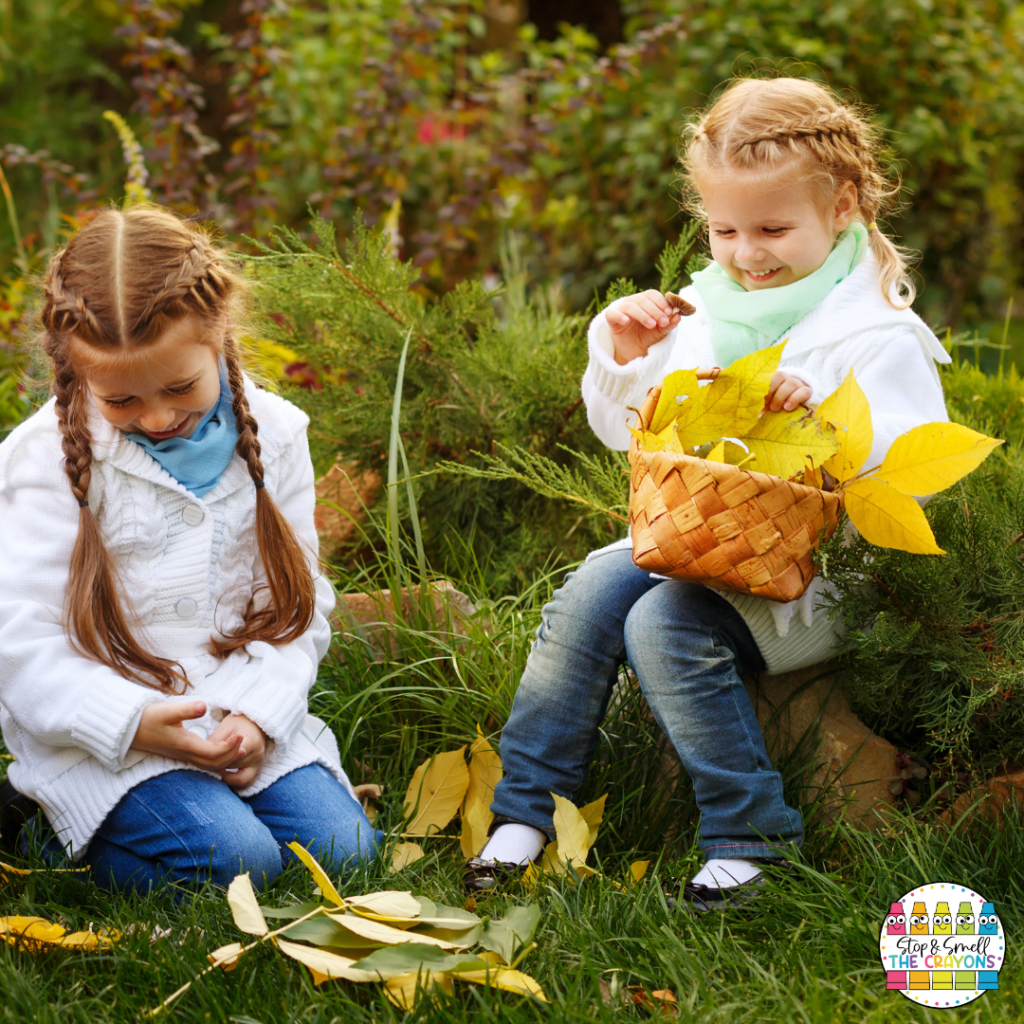
- Tie your math lesson back into the healthy foods lesson you’ve already taught! Explain perimeter to your students, then tell them that the perimeter of a grocery store is where healthy food is located. The closer you get to the center of the store, the less healthy for you the food is. Students will remember perimeter as “sticking to the outer walls of the grocery store” forever!
- Connect your word problems to your science curriculum. Make up word problems like, “Joey has 3 trees, 6 rocks, and 10 bees. How many living things does he have?”
- Make a Class Living Things Graph. Take a walk and count the number of trees, flowers, insects, and animals that you found as a class. Back in the classroom, graph the results on a bar graph. Compare the number of different types of living things in your area.
It just takes a little bit of creativity and switching things up a bit, but you truly could incorporate your living things theme into any number of your math standards!
Practice Writing About Living Things
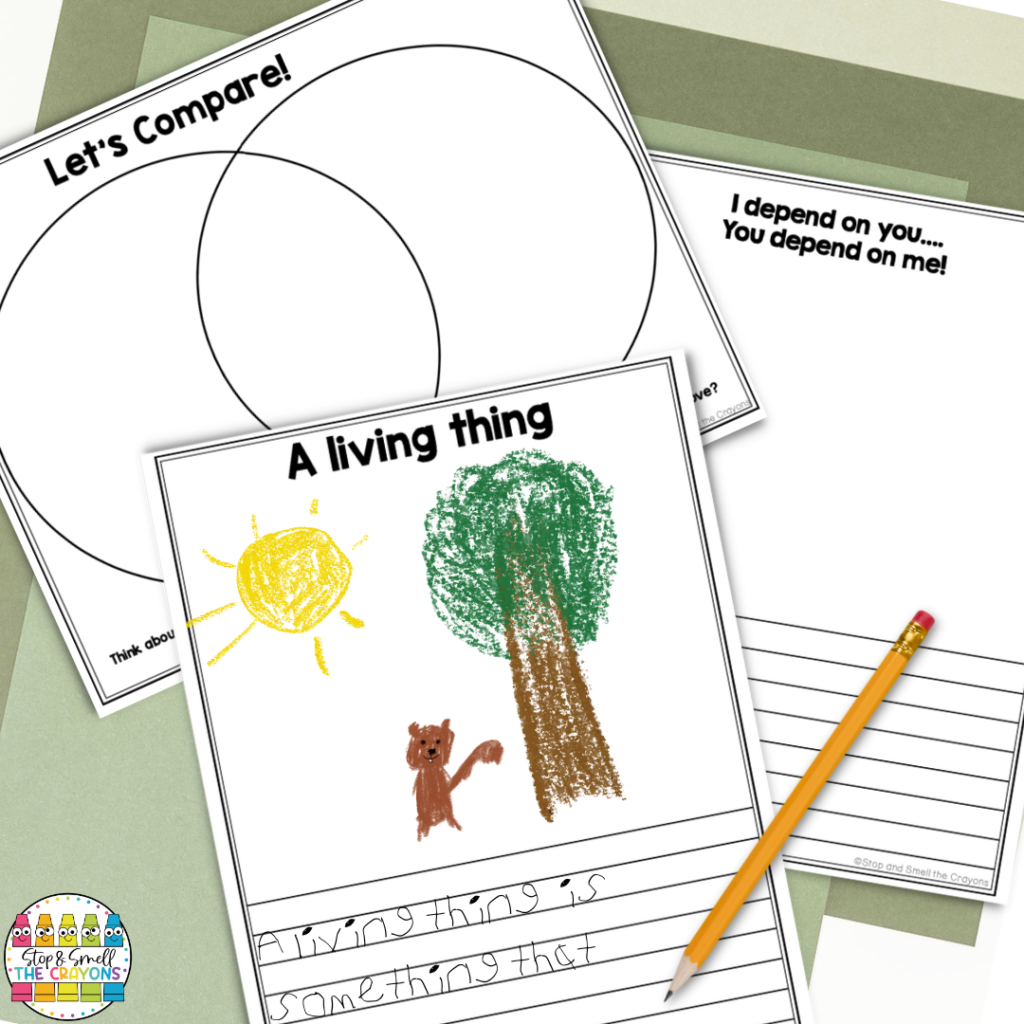
Teachers are often the most concerned with getting their Grade 1 students reading and writing on grade level. And with good reason! Grade 1 is a crucial time when students are learning to read and improving their writing skills.
It’s scary to give up precious teaching time to focus on other subjects.
And this is what makes the cross-curricular lesson planning so important!
You can still have students working on reading and writing skills while they are learning about living things!
Here are some fun ways to do both at the same time!
- Give your students a “real life” persuasive writing task. Ask them to write a letter persuading you to get a class pet! They must include how they plan to care for it!
- Ask your students to create a Venn Diagram comparing living and non-living things. Afterward, students will write a short paragraph using the info from the Venn diagram.
- Tape illustrated vocabulary cards on your wall to make a Word Wall. Have students practice reading the words each day. Ask them to choose 5 words from the wall to write sentences for. Advanced students could include those words in a story they write where a living thing is the main character.
- Any time your students write a story for you, have them read it aloud to you, a partner, or the class (if they feel comfortable). Reading their writing allows your students to build their fluency as well as their confidence!
If you need something a little more “print and go”, grab my Needs and Characteristics of Living Things Unit! It includes several creative thinking writing prompt pages that your student will want to write about! Plus, they have to use what they have learned about living things to do it!
Hands-on Science Centers
I am sure you know by now that I am a hands-on kind of teacher (aren’t most science teachers?!)! We all know the benefits of allowing students to observe and experience things for themselves. Help students discover the importance of their 5 senses with fun “touch”, “taste”, “smell”, “hearing”, and “seeing” centers!
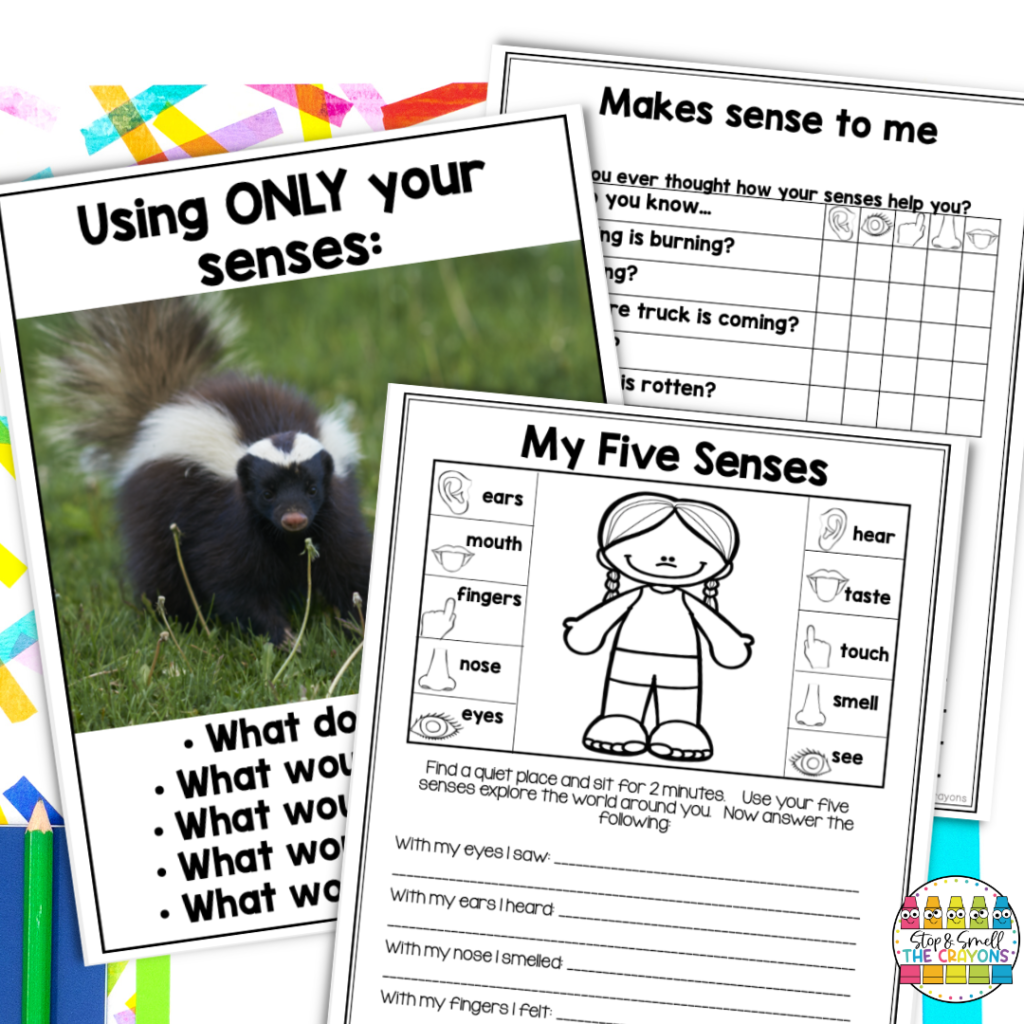
- Sight: Display items and have students describe what they look like.
- Touch: Place items in a cloth bag and ask students to identify them using only their sense of touch.
- Smell: Place items with distinctive smells in a brown paper bag. Students must guess the item in each bag using only their sense of smell.
- Taste: Blindfold students and have them identify various foods by taste only. Good items to use are bananas, chocolate chips, pickles, etc… – *Identify allergies beforehand and use caution. Please monitor this center for student safety!*
- Hearing: Ask students to identify sounds using only their sense of hearing. Good items to use are a bag crinkling, a bell ringing, a pencil falling, etc…
These Senses centers are fun for kids and demonstrate the importance of our senses! If you need more guidance on this topic, you can find printables for an amazing senses lesson in my Needs and Characteristics of Living Things Unit. There’s no need to scramble for ideas when everything you need is right here waiting to be printed off and used immediately in your classroom!
Get Your Students Thinking!
Inquiry-based learning is a necessity when it comes to science! Grade 1 students are naturally curious. So it makes sense to encourage them to ask questions and seek answers about living things. I also love the way inquiry-based learning helps students develop critical thinking and problem-solving skills.
I love using the printable resources in my Living Things Unit to teach my students that plants are alive too! We discuss the parts of a plant, what parts we can eat, and how their being alive affects us as humans.
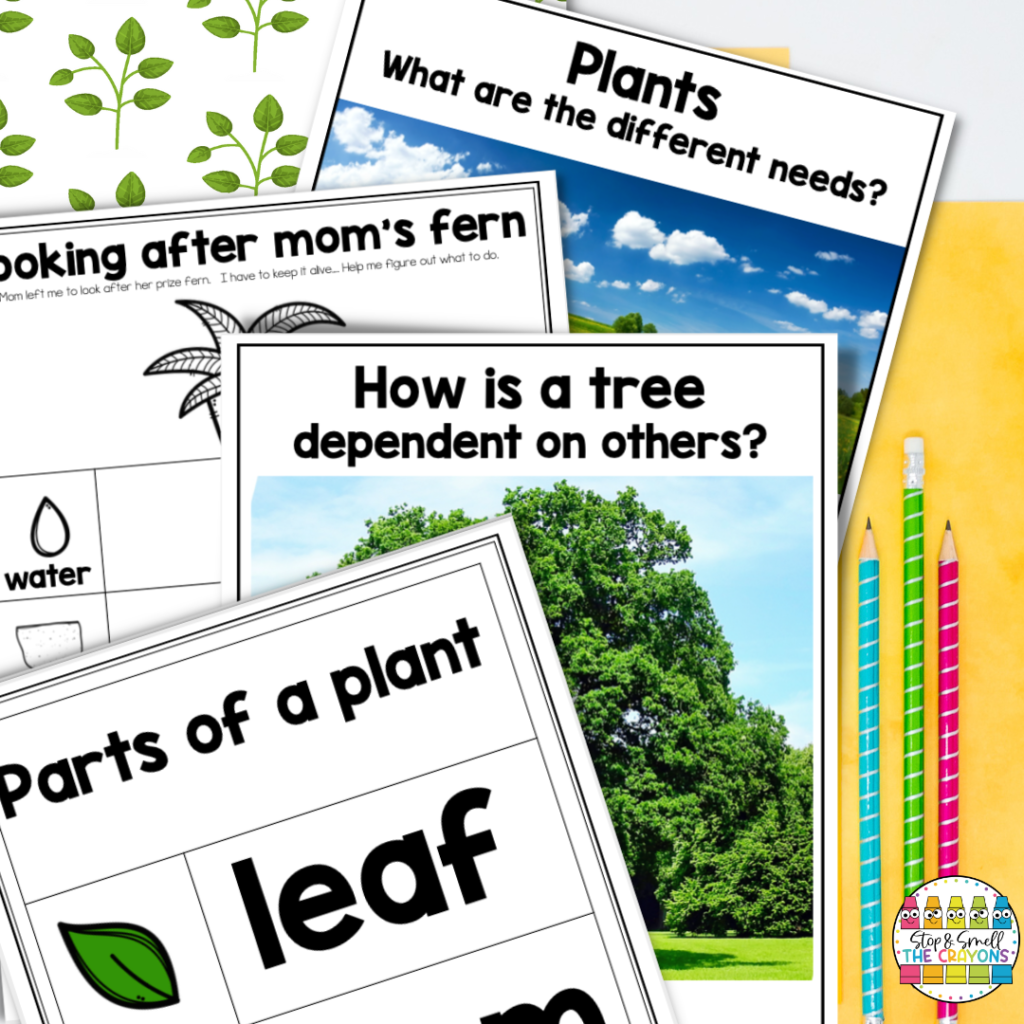
Once we have learned about plants being living things we get down to an inquiry-based learning activity! For this task I have students sit in a circle and bring their lunch! We all open our boxes and bags and search our food for living things! Ask your students questions like:
- What part of the plant are you eating today?
- Who has stems? Flowers? Roots? Leaves?
- Are you confused about your food category? Why?
I make sure to fill my lunch bag with lots of good examples like peanuts, grapes, sunflower seeds, celery, etc… So that we have plenty to talk about! Your students will enjoy trying to sort each item into its correct category, and you will love the thinking going on at lunchtime!
Search for Living Things Outdoors!
Your students will always be more engaged when you link their learning to an interesting activity that breaks the walls of the classroom! So take your kids outside with these fun activities!
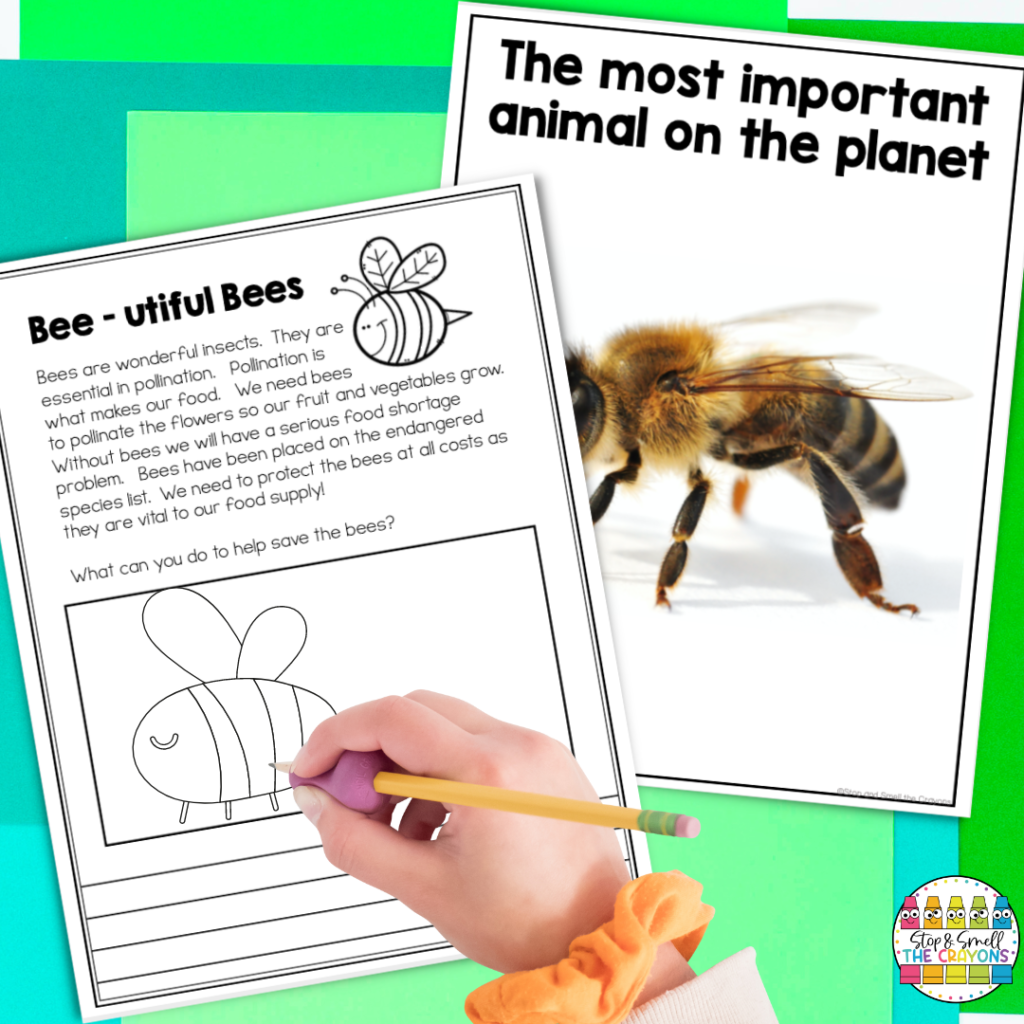
- Take a nature hike and collect non-living and living things. I recommend bringing a bug jar to capture and study bugs, then release them when you’re finished.
- Identify a living thing (say a caterpillar) and have the students identify what things in the environment the caterpillar is dependent on. Ask what might be dependent on the caterpillar (caterpillar is dependent on grass and leaves to eat and grow, birds are dependent on caterpillars to eat, etc.).
- Using the resources in my Living Things Unit, I teach my students about bees. Then we go outside to observe bees and talk about their importance. Walking outside you may/may not see them. Be and they should be differentiated from wasps – bees are furry, wasps are not), but students need to know how we are all dependent on even the smallest creatures.
- After the bee discussion, show The Bee Movie as a wrap-up to this unit (if permitted). The Bee Movie shows that all life is valuable because we are all dependent & bees are essential to our survival.
Taking your 1st graders outside to learn about living things is an engaging and exciting experience that allows them to make real-world connections between what they are learning and the natural world. Outdoor learning experiences help more fully understand what’s being taught in the classroom, so I hope you’ll consider using these ideas with your students!
Are You Excited to Teach Needs and Characteristics of Living Things yet?
Are you excited to teach Needs and Characteristics of Living Things yet?
Needs and Characteristics of Living Things is a big unit to teach and can be a daunting task. I hope you can take these ideas, sprinkle them into your lessons over several subjects and days, and make learning fun and engaging for students!
Head on over to my TPT Store to grab these ready-to-go resources for teaching Needs and Characteristics of Living Things Unit. It couldn’t be easier to teach this standard than with this creative, done-for-you resource filled with activities just like you’ve seen in this post! Nothing could be easier than printing these pages and begin teaching with little to no prep! It’s a science teacher’s dream!
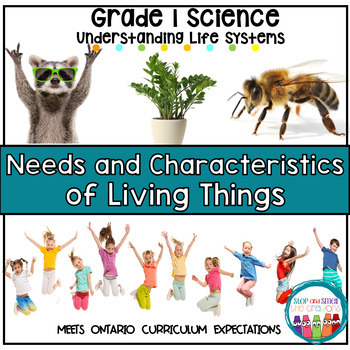
Be sure to grab this Free Needs and Characteristics of Living Things Checklist. While this is created for the Grade 1 Ontario Science Curriculum, it can be used by anyone! Simply click on the image below to download.
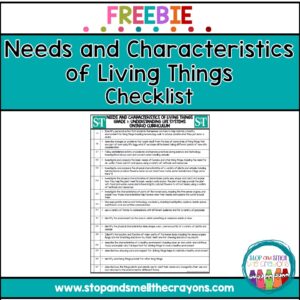
Need more Grade 1 science resources? Check out these blog posts filled with ideas.
Pin This Blog Post!
Pin this post to your favorite Science Board so that you have these ideas when you need them.
